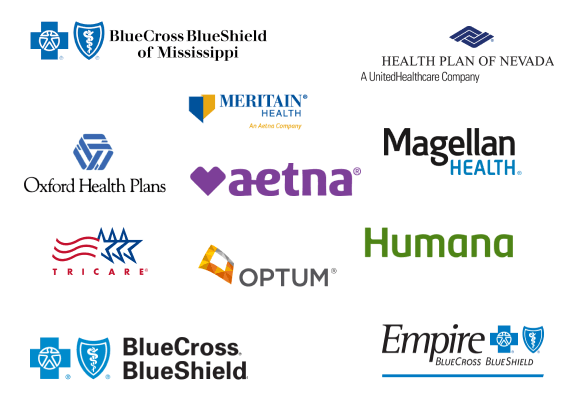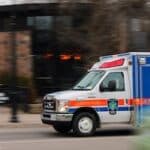Alcohol Misuse and Addiction
About Alcohol Misuse
Treatment Programs
Alcohol Addiction Overview
Alcohol addiction, clinically referred to as alcohol use disorder (AUD), is a common, chronic, and sometimes-progressive medical condition that entails compulsive drinking of alcohol.
For many people, having a beer, a glass of wine, or a cocktail can be an enjoyable part of a meal, occasional social gatherings or celebrations. For others, drinking in moderation may be more difficult and they may find themselves unable to control their alcohol use.

Alcohol Misuse Information & Statistics
Alcohol use is common in America. In 2021, more than half of all adults reported drinking alcohol in the past month.1 And it’s not just adults; more than half of all high school seniors surveyed in the 2020 Monitoring the Future survey admitted to past-year drinking.2
While many Americans drink responsibly, excessive drinking results in an estimated 140,000 deaths in the U.S. every year.1,3 Excessive drinking includes both heavy drinking and binge drinking, as well as any drinking by a pregnant woman or person under the legal drinking age of 21.3
What Is Alcohol Use Disorder?
An alcohol use disorder goes beyond the occasional binge or periods of heavy drinking and reflects a loss of control over one’s alcohol use. Alcohol’s effects on the brain are similar to other drugs people misuse, and for some people alcohol use can become compulsive.4,5
Someone with an AUD will not be able to stop drinking even when their alcohol use is causing harm to their health or to other areas of their life, such as their relationships, job, or social life.5
Someone with an AUD might also be dependent on alcohol, needing to drink to avoid withdrawal.5 Alcohol dependence adds another layer of difficulty to getting sober.6

Long-Term Effects of Alcohol Misuse
What Are the Long-Term Effects of Alcohol Misuse?
The immediate dangers of intoxication—such as the risk of accidents and injuries, as well as blackouts and alcohol poisoning—are well-known. However, excessive alcohol use over time can lead to the development of chronic illness and many other serious physical and mental health problems. Some of these include:7,8
- Anxiety.
- Depression.
- Violent behaviors.
- Suicidal thoughts and actions.
- Suppression of the immune system.
- Heart problems, including irregular heart rhythms, heart muscle disease, or stroke.
- Liver disease.
- Inflammation of the pancreas.
- Increased risk of many cancer types, including cancer of the breast, esophagus, head and neck, colon, and liver.
Wernicke’s Encephalopathy and Korsakoff’s Syndrome
Chronic excessive alcohol use may also result in a very serious, although rare, brain disorder called Wernicke’s encephalopathy, which arises from a deficiency of Vitamin B1 (thiamine). Symptoms include:9
- Confusion.
- Vision problems.
- Dangerously low body temperature.
- Low blood pressure.
- Problems with muscle coordination.
Wernicke’s encephalopathy often develops into a more long-lasting condition called Korsakoff’s syndrome, symptoms of which include:9
- Disorientation.
- Vision problems.
- Tremors.
- Coma.
- Difficulty in making new memories or recalling old ones.
Wernicke’s encephalopathy and Korsakoff’s syndrome occur together so often that they are believed by many to be two phases of one syndrome (Wernicke-Korsakoff syndrome), with the first being the acute phase and the second being the chronic phase.9
Signs and Symptoms of Alcohol Withdrawal
For a person who regularly drinks heavily, quitting isn’t as simple as saying no to alcohol. Sometimes, it can actually be dangerous. The alcohol withdrawal syndrome has a broad range of symptoms from mild to severe.
For most people, alcohol withdrawal will be uncomfortable and may prompt serious urges to relapse in order to feel better. For others, alcohol withdrawal symptoms can be dramatic and severe, even dangerous and life-threatening.6

Alcohol Addiction Treatment
While there is no single “cure” for alcohol addiction, people struggling with alcohol misuse or undiagnosed alcohol use disorder can achieve and maintain long-term recovery. However, they may need help to do it.
For many people, treatment in some form or another is effective in significantly reducing or promoting complete abstinence from alcohol.
Alcohol addiction can be managed with evidence-based treatment approaches that include behavioral and pharmacological therapies.12

Types of Alcohol Treatment Programs
Alcohol treatment comes in many forms, and often people will engage with more than one type. Levels of addiction treatment may include:
Not every person’s treatment path will look the same, nor should it.6 At Desert Hope, American Addiction Centers’ Las Vegas alcohol rehab center, we individualize your recovery plan to your specific needs.

Paying for Alcohol Misuse Treatment
Desert Hope is in-network with many major health insurance companies and offers financing options to those in need. Check your insurance coverage by submitting the confidential and see if you qualify for financing by completing the questionnaire below.
Our compassionate admissions navigators are available 24/7 to answer your questions about types of rehab care and paying for rehab. We’re here to help you determine what is right for you or your loved one. Call us at .

You May Be Interested In
American Addiction Centers (AAC) is committed to delivering original, truthful, accurate, unbiased, and medically current information. We strive to create content that is clear, concise, and easy to understand.
While we are unable to respond to your feedback directly, we'll use this information to improve our online help.


